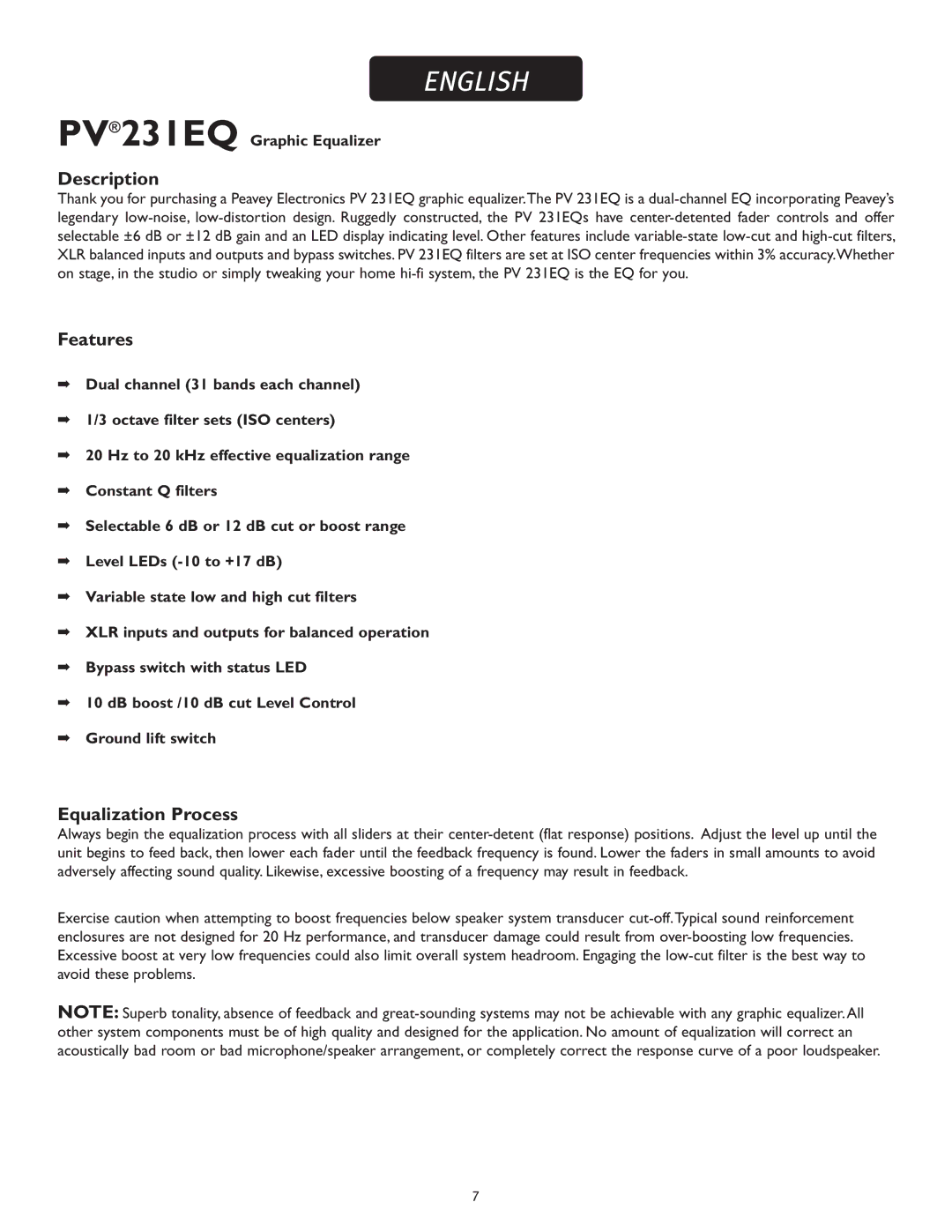PV 231EQ specifications
The Peavey PV 231EQ is a professional-grade graphic equalizer designed to enhance audio quality in various sound reinforcement applications. This versatile unit is widely used in live sound environments, recording studios, and fixed installations, catering to both novice users and seasoned audio engineers.One of the main features of the PV 231EQ is its 31-band equalization capability across the 20Hz to 20kHz frequency range, allowing for precise tonal adjustments. Each of the 31 bands provides a +/-12 dB gain range, empowering users to boost or cut specific frequencies to achieve a balanced sound. This level of control is essential for overcoming feedback issues in live performances and achieving clarity in recorded tracks.
The PV 231EQ employs advanced circuitry to ensure high-quality audio processing. It features low-noise, high-headroom operation, which helps in maintaining signal integrity even at higher output levels. Additionally, the unit is equipped with bandpass and notch filtering capabilities, further allowing sound engineers to tailor the audio output to meet specific room acoustics or performance requirements.
Another standout characteristic of the PV 231EQ is its ease of use. The front panel is designed with user-friendly controls, including illuminated sliders that provide visual feedback, making adjustments straightforward during live settings. This intuitive interface makes it accessible for users of all skill levels, from beginners to professionals.
The sturdy construction of the PV 231EQ ensures durability, making it suitable for both mobile applications and permanent installations. The unit is housed in a robust steel chassis, providing protection against the rigors of travel and on-stage use.
In addition to its robust equalization and construction features, the PV 231EQ is equipped with additional signal processing tools, such as high-pass and low-pass filters, ensuring flexibility for various audio scenarios. This capability can enhance overall system performance and protect speakers from unwanted low-frequency signals.
Overall, the Peavey PV 231EQ stands out as a reliable and versatile equalizer in the audio industry. Its comprehensive frequency control, high-quality construction, and user-friendly design make it a valuable tool for achieving excellent sound quality in any audio setting. Whether for live performances, studio recordings, or installations, the PV 231EQ continues to be a trusted choice for audio professionals seeking to elevate their sound.
